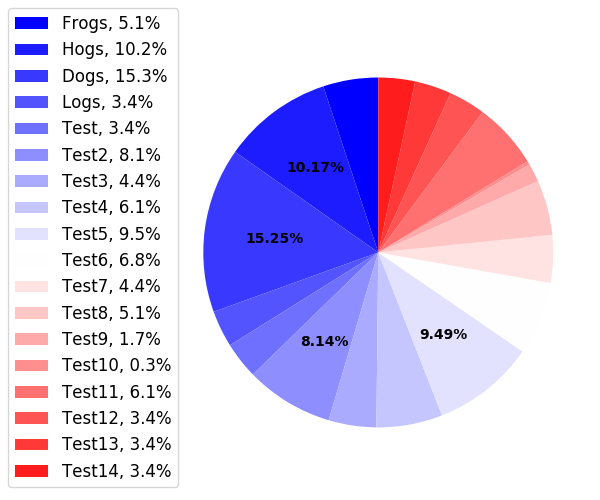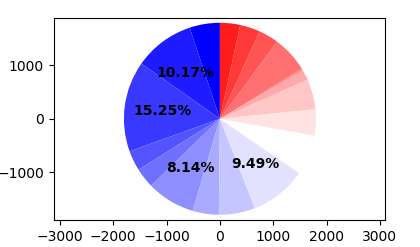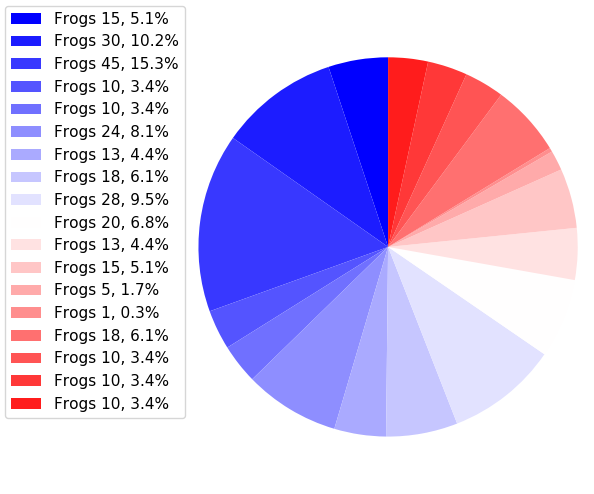Trying to make the pie larger. Looking at the docs, and other places, it says to set the radius. It seems no matter which value I put in the radius there's no increase. I'm posting the full code and the image it generates.
import matplotlib.pyplot as plt
def autopct_generator(limit):
"""Remove percent on small slices."""
def inner_autopct(pct):
return ('%.2f%%' % pct) if pct > limit else ''
return inner_autopct
labels = 'Frogs', 'Hogs', 'Dogs', 'Logs', 'Test', 'Test2', 'Test3', \
'Test4', 'Test5', 'Test6', 'Test7', 'Test8', 'Test9', 'Test10', \
'Test11', 'Test12', 'Test13', 'Test14'
sizes = [15, 30, 45, 10, 10, 24, 13, 18, 28, 20, 13, 15, 5, 1, 18, 10,
10, 10]
NUM_COLORS = len(sizes)
fig1, ax1 = plt.subplots(figsize=(6, 5))
# set color theme
# https://matplotlib.org/api/pyplot_summary.html#colors-in-matplotlib
theme = plt.get_cmap('bwr')
ax1.set_color_cycle([theme(
1. * i / NUM_COLORS) for i in range(NUM_COLORS)])
box = ax1.get_position()
ax1.set_position([box.x0, box.y0, box.width * 1.3, box.height])
_, _, autotexts = ax1.pie(
sizes, autopct=autopct_generator(7), startangle=90, radius=1.8 * 1000)
for autotext in autotexts:
autotext.set_weight('bold')
ax1.axis('equal')
total = sum(sizes)
plt.legend(
loc='upper left',
labels=['%s, %1.1f%%' % (
l, (float(s) / total) * 100) for l, s in zip(labels, sizes)],
prop={'size': 12},
bbox_to_anchor=(0.0, 1),
bbox_transform=fig1.transFigure
)
# fig1.set_size_inches(18.5, 10.5)
fig1.savefig('chart.png')







